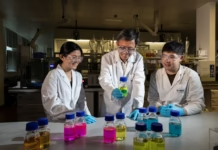Innovative Dry Coating Technology for Electrodes
Dürr has unveiled a groundbreaking dry coating system called X.Cellify DC, designed to revolutionize the production of battery electrodes. Traditional wet coating methods rely on applying cathode and anode materials as liquid solutions onto metal foils and drying them. Dürr’s new process uses dry powder mixtures to create free-standing films. This innovative Activated Dry Electrode® process, developed in partnership with LiCAP Technologies, presses dry battery materials into recyclable films without solvents or energy-intensive drying ovens. As a result, the technology significantly reduces active material waste and energy consumption, key factors for sustainable battery manufacturing. This advancement is poised to accelerate the scaling of lithium-ion and solid-state batteries for electric vehicles and stationary energy storage applications.
Energy Efficiency and Reduced Waste in Battery Manufacturing
Traditional electrode production requires large drying ovens and solvent recovery systems, consuming high energy amounts and occupying extensive factory space. Dürr’s dry coating technology offers a dramatic improvement, reducing energy consumption by up to 70% and cutting space requirements by approximately 65%. These efficiencies stem from the elimination of drying stages and solvents, making battery production greener and more cost-effective. Moreover, the free-standing films used in the process can be entirely recycled in the production loop if they do not meet quality standards, minimizing scrap and active material loss. This closed-loop approach enhances resource efficiency, addressing critical sustainability challenges in electric vehicle battery supply chains. And supports the growing demand for eco-friendly transportation solutions.
Improved Film Handling and Electrode Quality
A key feature of X.Cellify DC is its unique web guidance system that moves the free-standing film through the production line without a carrier foil until the final lamination step. This method reduces deformation risks during lamination, preserving the integrity of the collector foil. Dürr compresses the film to precise thickness, density, and porosity before laminating it. Thus improves electrode processability in subsequent manufacturing steps like stacking and notching. This precise control over electrode properties supports enhanced battery performance. It makes the technology highly suitable for next-generation solid-state batteries that promise higher energy density and improved safety for electric vehicles.
Collaborative Innovation for Gigawatt-Scale Battery Production
Dürr’s dry coating system combines the company’s electrode manufacturing expertise, Ingecal’s precision calender technology, and LiCAP’s patented dry electrode process. This collaboration aims to bring the technology to industrial level through pilot projects targeting gigawatt-scale battery production. Such scaling is critical to meet the soaring global demand for batteries in electric cars and stationary energy storage systems. That underpin the transition to clean energy and sustainable mobility. Dürr is actively seeking industry partners to implement this technology in real production environments, signaling readiness to pioneer the future of electric vehicle battery manufacturing with more efficient, sustainable solutions.







